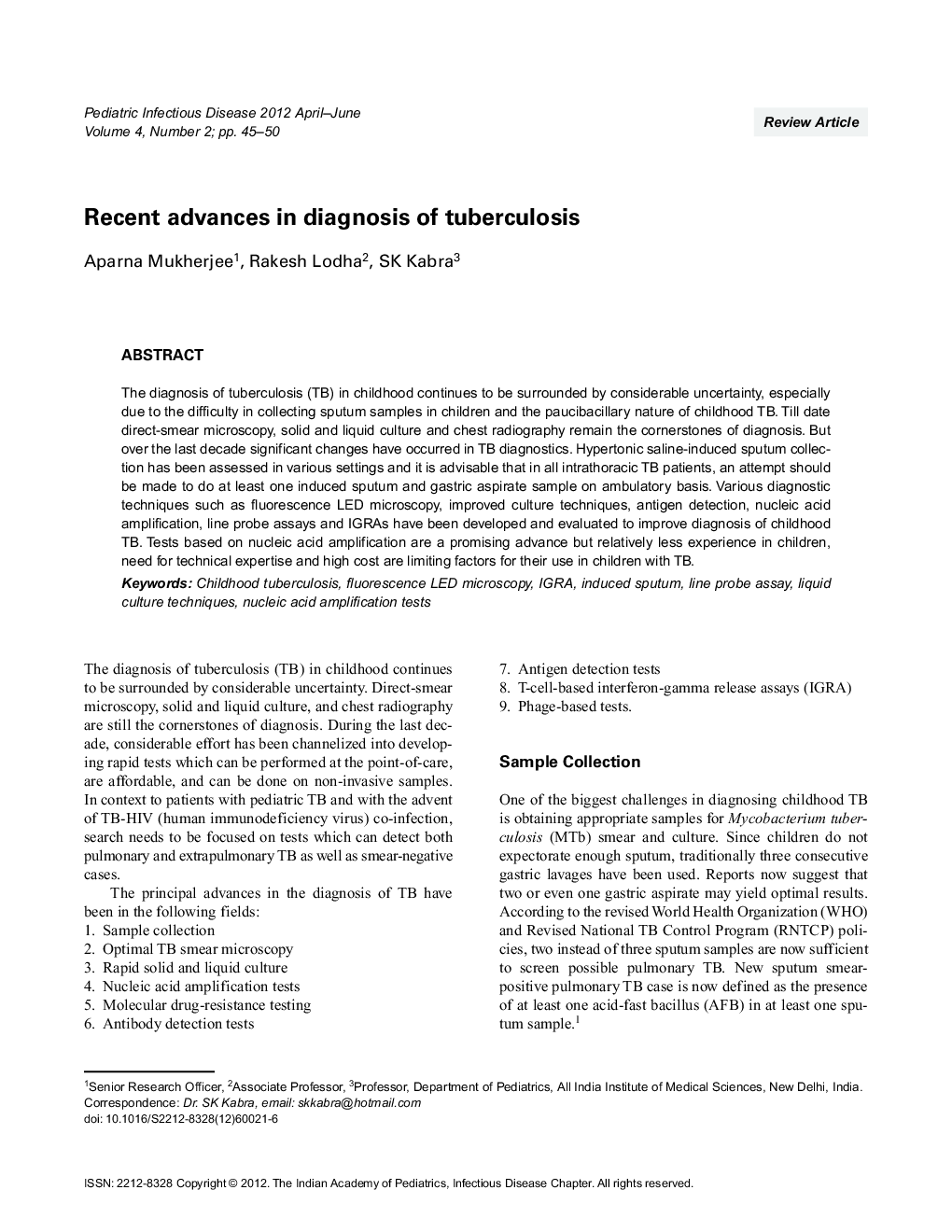| Article ID | Journal | Published Year | Pages | File Type |
|---|---|---|---|---|
| 3382508 | Pediatric Infectious Disease | 2012 | 6 Pages |
The diagnosis of tuberculosis (TB) in childhood continues to be surrounded by considerable uncertainty, especially due to the difficulty in collecting sputum samples in children and the paucibacillary nature of childhood TB. Till date direct-smear microscopy, solid and liquid culture and chest radiography remain the cornerstones of diagnosis. But over the last decade significant changes have occurred in TB diagnostics. Hypertonic saline-induced sputum collection has been assessed in various settings and it is advisable that in all intrathoracic TB patients, an attempt should be made to do at least one induced sputum and gastric aspirate sample on ambulatory basis. Various diagnostic techniques such as fluorescence LED microscopy, improved culture techniques, antigen detection, nucleic acid amplification, line probe assays and IGRAs have been developed and evaluated to improve diagnosis of childhood TB. Tests based on nucleic acid amplification are a promising advance but relatively less experience in children, need for technical expertise and high cost are limiting factors for their use in children with TB.
